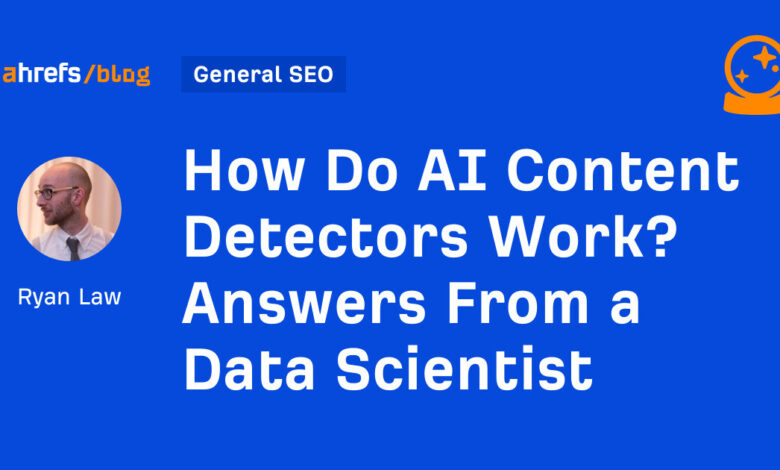Decoding the Inner Workings of AI Content Detectors: Insights from a Data Scientist

However, if you try to test a different type of writing, like poetry or legal documents, the detector may not work as well. This lack of generalization is a significant limitation of current AI content detectors.
Another issue is that AI content detectors can be easily fooled by adversarial examples. Adversarial examples are slight modifications made to a text that can completely change the detector’s classification. For example, changing a few words or phrases in an AI-generated text can trick the detector into thinking it was written by a human.
Additionally, AI content detectors may struggle with identifying text that has been heavily edited or paraphrased. Since AI-generated text is often considered original, it may be challenging for detectors to distinguish between human-written and AI-generated content that has been heavily modified.
In conclusion, while AI content detectors have made significant advancements in recent years, there are still challenges that need to be addressed. Detecting AI-generated content is a complex task that requires a combination of statistical methods, neural networks, and watermarking techniques. Researchers and developers need to continue refining and improving these methods to create more robust and accurate AI content detectors.
Furthermore, it is essential to consider the limitations of current AI content detectors and acknowledge that they may not be foolproof in all situations. As AI technology continues to evolve, so too must our methods for detecting AI-generated content. By staying informed and aware of these advancements and limitations, we can better navigate the complex landscape of AI-generated content and ensure that we are consuming accurate and reliable information. AI content detection is a rapidly evolving field with the potential to revolutionize the way we approach text analysis and verification. However, as with any technology, there are limitations and challenges that need to be addressed for optimal performance. In a recent article by Yong Keong Yap, the author highlights some important considerations when using AI content detectors, shedding light on the nuances and complexities of this technology.
Yap emphasizes the importance of understanding the training data used for AI content detectors. The effectiveness of these detectors can vary depending on the type of text they have been trained on. For example, a detector trained on news content may not perform well when faced with creative fiction or regional dialects like Singlish. This highlights the need for diverse and representative training data to ensure the reliability of AI content detectors across different text types.
One of the key challenges identified by Yap is the issue of partial detection. While most AI detection models focus on classifying entire bodies of text as either human-written or machine-generated, real-life scenarios often involve a mix of AI-generated and human-written text. This type of partial detection, known as span classification or token classification, presents a more complex problem that current AI detectors struggle to handle effectively. As such, there is a need for further research and development in this area to improve the accuracy and reliability of AI content detectors.
Another important consideration highlighted by Yap is the vulnerability of AI detectors to humanizing tools. These tools are designed to disrupt the patterns that detectors look for, making it harder to accurately classify AI-generated text. By intentionally introducing errors or deviations from standard writing conventions, humanizers can effectively deceive AI detectors and reduce their accuracy. This underscores the need for ongoing vigilance and adaptation in the development of AI content detection technologies.
In conclusion, AI content detectors have the potential to be powerful tools for analyzing and verifying text. However, it is important to approach their use with a critical eye and an awareness of their limitations. By understanding the training data, addressing the challenges of partial detection, and remaining vigilant against adversarial manipulation, we can harness the capabilities of AI content detectors effectively and responsibly.
FAQs:
- What is the importance of understanding the training data used for AI content detectors?
- Understanding the training data is crucial for ensuring the reliability and accuracy of AI content detectors across different text types.
- What is the challenge of partial detection in AI content detectors?
- Partial detection, or the classification of mixed AI-generated and human-written text, poses a complex problem for current AI detectors that requires further research and development.
- How can humanizing tools impact the accuracy of AI content detectors?
- Humanizing tools are designed to disrupt the patterns that detectors look for, making it harder to accurately classify AI-generated text and reducing the detectors’ accuracy.
- What guiding principles should be followed when using AI content detectors?
- It is important to learn about the detector’s training data, test multiple documents from the same author, avoid using detectors for high-stakes decisions, and maintain a healthy dose of skepticism due to the potential for false positives.
- What is the future outlook for AI content detection technology?
- As AI becomes more prevalent in text generation, the challenges and limitations of current detectors may become more pronounced. Continued research and development are needed to address these challenges and ensure the effectiveness of AI content detectors in an evolving textual landscape.




